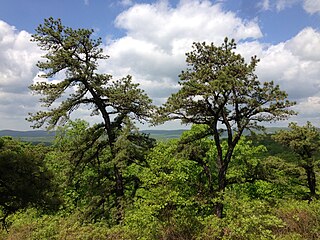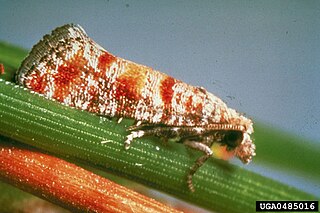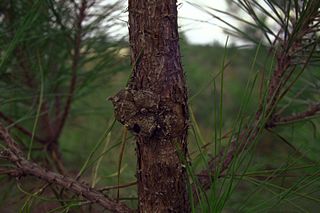| Macaria granitata | |
|---|---|
 | |
| Scientific classification | |
| Kingdom: | Animalia |
| Clade: | Euarthropoda |
| Class: | Insecta |
| Order: | Lepidoptera |
| Family: | Geometridae |
| Genus: | Macaria |
| Species: | M. granitata |
| Binomial name | |
| Macaria granitata Guenée, 1857 | |
| Synonyms | |
| |
Macaria granitata, the granite moth, is a moth of the family Geometridae. It is found in Pennsylvania, Maine, New Hampshire, New England, New Jersey, southern Quebec, Ohio, North Carolina, South Carolina and Georgia.

Moths comprise a group of insects related to butterflies, belonging to the order Lepidoptera. Most lepidopterans are moths, and there are thought to be approximately 160,000 species of moth, many of which have yet to be described. Most species of moth are nocturnal, but there are also crepuscular and diurnal species.

Pennsylvania, officially the Commonwealth of Pennsylvania, is a state located in the northeastern and Mid-Atlantic regions of the United States. The Appalachian Mountains run through its middle. The Commonwealth is bordered by Delaware to the southeast, Maryland to the south, West Virginia to the southwest, Ohio to the west, Lake Erie and the Canadian province of Ontario to the northwest, New York to the north, and New Jersey to the east.

Maine is a state in the New England region of the northeastern United States. Maine is the 12th smallest by area, the 9th least populous, and the 38th most densely populated of the 50 U.S. states. It is bordered by New Hampshire to the west, the Atlantic Ocean to the southeast, and the Canadian provinces of New Brunswick and Quebec to the northeast and northwest respectively. Maine is the easternmost state in the contiguous United States, and the northernmost state east of the Great Lakes. It is known for its jagged, rocky coastline; low, rolling mountains; heavily forested interior; and picturesque waterways, as well as its seafood cuisine, especially lobster and clams. There is a humid continental climate throughout most of the state, including in coastal areas such as its most populous city of Portland. The capital is Augusta.
The wingspan is about 25 mm. There are one to two generations per year.

The wingspan of a bird or an airplane is the distance from one wingtip to the other wingtip. For example, the Boeing 777-200 has a wingspan of 60.93 metres, and a wandering albatross caught in 1965 had a wingspan of 3.63 metres, the official record for a living bird. The term wingspan, more technically extent, is also used for other winged animals such as pterosaurs, bats, insects, etc., and other fixed-wing aircraft such as ornithopters. In humans, the term wingspan also refers to the arm span, which is distance between the length from one end of an individual's arms to the other when raised parallel to the ground at shoulder height at a 90º angle. Former professional basketball player Manute Bol stands at 7 ft 7 in (2.31 m) and owns one of the largest wingspans at 8 ft 6 in (2.59 m).
The larvae mainly feed on Pinus rigida in New England. In southern New Jersey they have been recorded on Pinus rigida and other hard pines.

Pinus rigida, the pitch pine, is a small-to-medium-sized pine. It is native to eastern North America, from central Maine south to Georgia and as far west as Kentucky, and in two pockets along the St. Lawrence River in southern Quebec and Ontario. It is found in environments which other species would find unsuitable for growth such as acidic, sandy, and low nutrient soils. This species occasionally hybridizes with other pine species such as loblolly pine, shortleaf pine, and pond pine ; the last is treated as a subspecies of pitch pine by some botanists.













